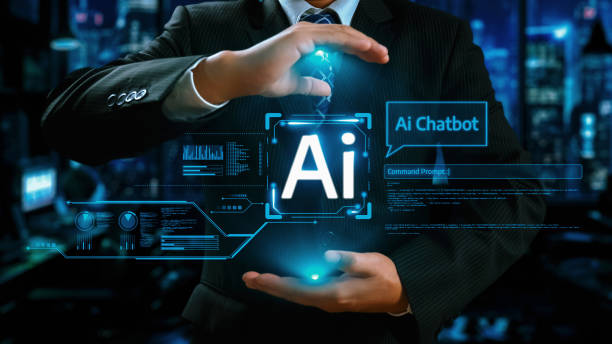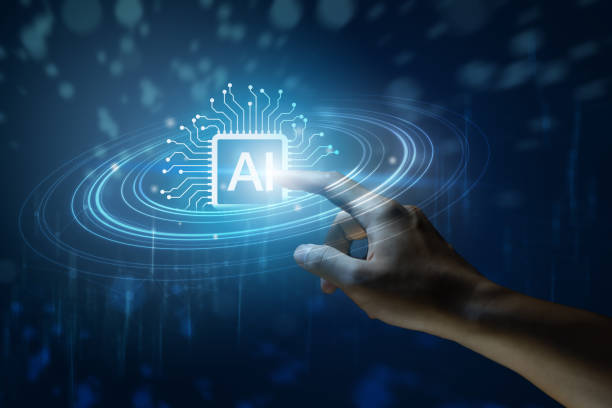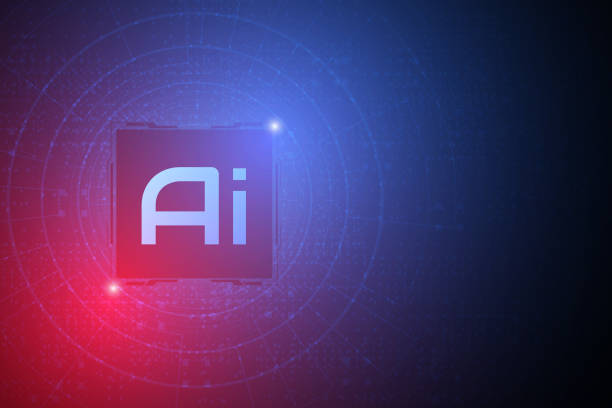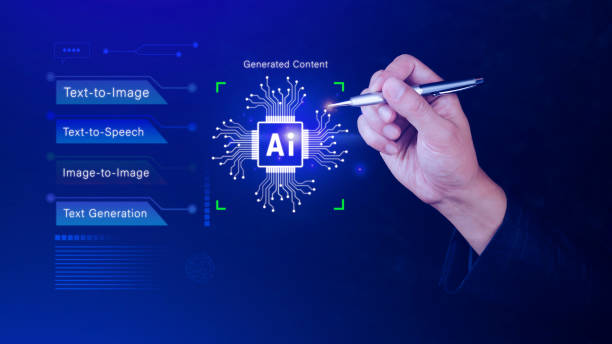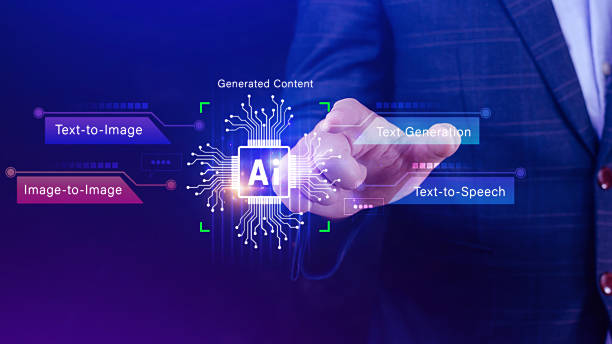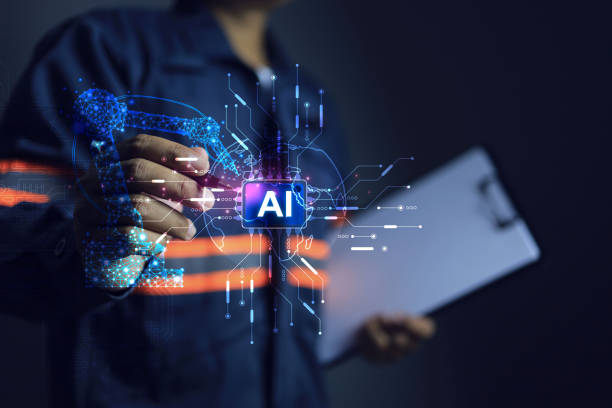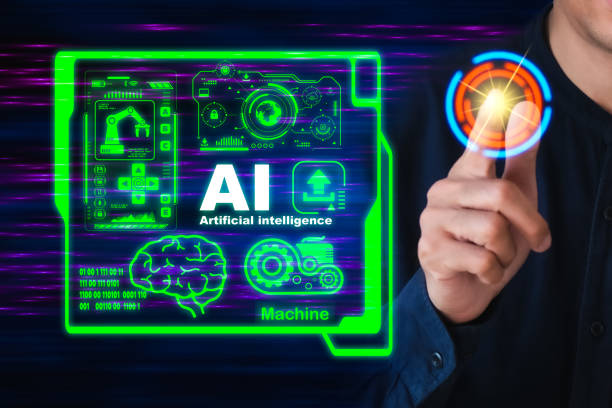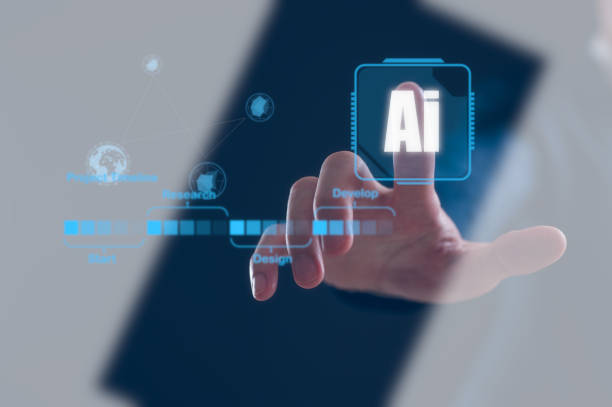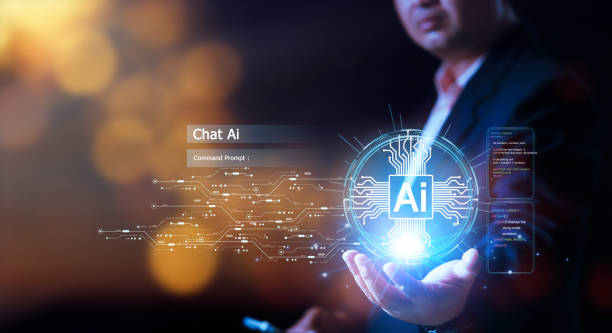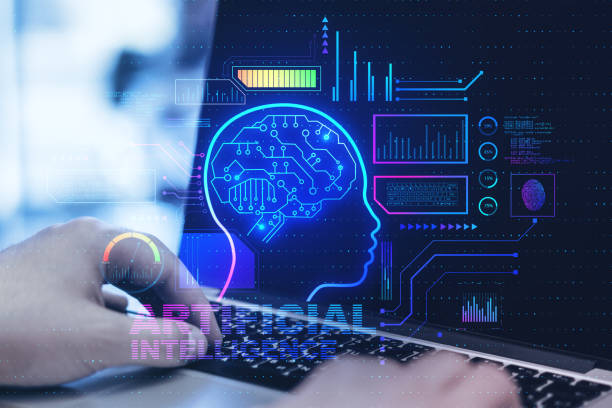`
What is an AI Robot and How Does it Work?
#AI Robot is a combination of two fields: #robotics and #artificial_intelligence.
Simply put, it is a #robot that uses artificial intelligence algorithms to perform tasks that typically require human intelligence.
These tasks can include learning, problem-solving, decision-making, pattern recognition, and natural language understanding.
Artificial intelligence allows the robot to interact with its surrounding environment and adjust its behavior based on the received data.
An AI robot collects information through sensors, this information is analyzed by powerful processors, and then the robot acts based on these analyses.
The main difference between ordinary robots and AI robots is their ability to learn and adapt to new conditions. Ordinary robots operate based on pre-programmed instructions, while AI robots can improve their performance over time using machine learning algorithms.
AI robots are rapidly advancing, and their applications are increasing in various industries.
Are you tired of your online store having visitors but no sales? Rasaweb solves your main problem with professional online store designs!
✅ Significant increase in sales with targeted design
✅ Flawless user experience for your customers
⚡ Get free consultation!
Types of AI Robots and Their Applications
AI robots are designed and manufactured in various types, each suitable for specific applications.
Some of the most important types of AI robots include industrial robots, service robots, medical robots, and military robots.
Industrial robots are typically used to perform repetitive and dangerous tasks on production lines.
These robots can work with high precision and speed and help increase productivity.
Service robots are used in various environments such as hospitals, hotels, and restaurants to provide services to customers.
These robots can help patients, clean rooms, and deliver orders.
Medical robots are used in surgeries, rehabilitation, and disease diagnosis.
These robots can perform complex surgeries with high precision and help patients in the rehabilitation process.
Military robots are used in reconnaissance operations, bomb disposal, and transportation of equipment.
AI robots have significant potential to change various industries, and it is expected that they will play a more important role in our lives in the future.
Robots play an important role in the industry today.
The use of AI robots is expanding.
Click here to preview your posts with PRO themes ››
Benefits of Using AI Robots in Various Industries
Using AI robots in various industries has many benefits.
One of the most important benefits is increased productivity.
Robots can work tirelessly and at high speeds, helping to increase production.
Another advantage is cost reduction.
Robots do not need salaries, insurance, and other benefits, and they can help reduce production costs.
AI robots can work in dangerous and inaccessible environments for humans and prevent accidents.
Additionally, AI robots can help improve product quality.
Robots can perform tasks with high precision and prevent errors.
Finally, AI robots can contribute to innovation and the development of new products.
Robots can collect and analyze large amounts of data and help identify new patterns and opportunities.
The use of AI robots in industry is rapidly expanding, and its benefits for companies and societies are undeniable.
AI robots also contribute to economic growth.
| Advantage | Description |
|---|---|
| Increased Productivity | Robots can work tirelessly and at high speeds. |
| Cost Reduction | Robots do not need salaries and other benefits. |
| Improved Safety | Robots can work in dangerous environments. |
| Improved Quality | Robots can perform tasks with high precision. |
| Innovation | Robots can collect and analyze large amounts of data. |
Challenges Facing the Development and Use of AI Robots
Despite the numerous benefits, the development and use of AI robots also come with challenges.
One of the most important challenges is ethical issues.
Robots can make decisions that have serious ethical implications.
For example, if a robot in a self-driving car causes an accident, who will be responsible? Another challenge is security issues.
Robots can be attacked by hackers and used for malicious purposes.
In addition, the development and use of AI robots can lead to job losses.
Robots can automate many of the tasks that are currently performed by humans.
Finally, the cost of developing and maintaining AI robots is high.
Companies need to invest heavily in research and development, equipment purchases, and personnel training.
Addressing these challenges requires cooperation between governments, companies, researchers, and societies.
AI robots need careful consideration.
Are you tired of losing business opportunities due to not having a professional company website?
Rasaweb helps you with professional company website design:
✅ Create a powerful and reliable image of your brand
✅ Turn website visitors into loyal customers
⚡ Get a free consultation now!
Machine Learning and Its Role in the Development of AI Robots
Machine Learning is an important subfield of artificial intelligence that plays a fundamental role in the development of AI robots.
Machine learning allows robots to learn from data and improve their performance without explicit programming.
Machine learning algorithms allow robots to identify patterns in data, make predictions, and make intelligent decisions.
Machine learning enables AI robots to adapt to environmental changes and continuously improve their performance.
There are different types of machine learning algorithms, each suitable for specific applications.
Some of the most important algorithms include supervised learning, unsupervised learning, and reinforcement learning.
Supervised learning allows robots to learn patterns using labeled data.
Unsupervised learning allows robots to identify patterns in data without using labeled data.
Reinforcement learning allows robots to improve their behavior by receiving rewards and penalties.
AI robots have great potential to change various industries.
The Future of AI Robots and Their Impact on Human Life
The future of AI robots is very bright and full of potential.
Rapid advances in the fields of artificial intelligence, robotics, and machine learning have made robots smarter and more capable day by day.
It is expected that in the future, robots will play a more important role in our lives and will help us in various fields such as healthcare, education, transportation, and manufacturing.
For example, medical robots can perform complex surgeries with high precision and help patients in the rehabilitation process.
Educational robots can help students learn complex concepts and personalize education.
Self-driving robots can reduce traffic and increase road safety.
Industrial robots can increase production and reduce costs.
However, the ethical, security, and social challenges arising from the development and use of AI robots should also be considered, and appropriate solutions should be provided to address them.
AI robots are a transformative phenomenon that can improve our lives, but they must be used with caution and responsibility.
Case Study: AI Robots in the Automotive Industry
The automotive industry is one of the industries that widely uses AI robots.
Robots are used in production lines to perform repetitive and dangerous tasks such as welding, painting, and assembling parts.
These robots can work with high precision and speed and help increase productivity and reduce costs.
In addition, AI robots play a fundamental role in self-driving cars.
Self-driving cars use machine learning algorithms and various sensors to detect the surrounding environment and make decisions about how to drive.
These cars can reduce traffic, increase road safety, and help people with disabilities to drive.
Major automotive companies such as Tesla and Waymo are investing heavily in research and development of self-driving cars, and it is expected that we will see widespread adoption of these cars on the roads in the near future.
AI robots in the automotive industry are constantly advancing, and it is expected that they will play a more important role in this industry in the future.
| Application | Description |
|---|---|
| Production Lines | Welding, painting, assembly of parts |
| Self-Driving Cars | Environmental detection, driving decision-making |
| Navigation Systems | Providing optimal routes, avoiding traffic |
| Safety Systems | Hazard detection, accident prevention |
Impact of AI Robots on the Labor Market and Employment
The development and use of AI robots will have a significant impact on the labor market and employment.
On the one hand, robots can automate many of the tasks that are currently performed by humans and lead to job losses.
On the other hand, robots can also create new job opportunities.
For example, the need for specialists in the fields of artificial intelligence, robotics, and machine learning will increase.
In addition, robots can help increase productivity and economic growth, thereby creating new job opportunities in other industries.
Governments, companies, and individuals should prepare themselves for these changes and provide appropriate solutions to mitigate the negative effects and take advantage of the positive opportunities.
Training and retraining the workforce, developing new skills, and creating support policies can help people adapt to the new labor market.
AI robots have great potential to change the labor market.
Are you tired of your company’s website failing to meet your expectations? With Rasaweb, design a professional website that showcases the true face of your business.
✅ Increase the attraction of new customers and sales leads
✅ Increase your brand’s credibility and trust among the audience
⚡ Get a free website design consultation!
Ethical Issues Related to AI Robots
The development and use of AI robots come with serious ethical issues.
One of the most important issues is accountability.
If a robot makes a decision that has negative consequences, who will be responsible? The robot’s manufacturer, programmer, user, or the robot itself? Another issue is discrimination.
AI algorithms can be trained based on incomplete or biased data and, as a result, make decisions that are discriminatory.
For example, a recruiting robot can reject people based on gender or race.
In addition, robots can violate people’s privacy.
Robots can collect and analyze large amounts of data and use this data for illegitimate purposes.
To address these ethical issues, appropriate laws and regulations must be enacted, and ethical standards for the development and use of AI robots must be developed.
AI robots should be used to serve humanity and not to harm it.
#Artificial_intelligence should benefit everyone.
How to Implement AI Robots in Your Business
Implementing AI robots in your business can help increase productivity, reduce costs, and improve the quality of services.
The first step is to identify the processes that can be improved using AI robots.
For example, repetitive, time-consuming, and error-prone processes can be automated.
The next step is to choose the right AI robot.
You should choose a robot that matches the needs of your business and has the required capabilities.
The third step is the implementation and training of the robot.
The robot should be implemented correctly, and employees should be trained on how to work with it.
The fourth step is to monitor and improve the robot’s performance.
The robot’s performance should be continuously monitored and improved as needed.
Using AI robots requires careful planning and attention to detail, but the benefits can be very significant.
AI robots will soon be used in all businesses.
Frequently Asked Questions
| No. | Question | Answer |
|---|---|---|
| 1 | What is an AI robot? | An AI robot is a machine that is capable of understanding, reasoning, learning, and problem-solving, and can perform complex tasks with relative autonomy. |
| 2 | What are the most important applications of AI robots? | The main applications include industrial production, customer service (chatbots), medicine and surgery, self-driving transportation, space exploration, and military affairs. |
| 3 | What is the main difference between AI robots and ordinary robots? | Ordinary robots only follow programmed instructions, while AI robots can learn from data, make decisions, and adapt to new environments. |
| 4 | How do AI robots learn? | They identify patterns and improve their performance through machine learning algorithms (such as deep learning, reinforcement learning) and processing massive amounts of data. |
| 5 | Can AI robots have emotions? | Currently, AI robots do not have real emotions in the human sense. They can mimic or recognize emotions, but they do not have the understanding and experience of them. |
| 6 | What are the current limitations of AI robots? | Limitations include the need for large amounts of data, the inability to understand abstract concepts, the lack of real creativity, ethical issues, and the challenges of generalizability in new environments. |
| 7 | What is the role of AI in the development of humanoid robots? | AI helps humanoid robots to walk, maintain their balance, understand their surroundings, interact with humans, and perform complex tasks. |
| 8 | How is the future of AI robots predicted? | It is predicted that AI robots will become smarter, more autonomous, and capable of performing more complex tasks in daily life and industry, and their interaction with humans will increase. |
| 9 | Can AI robots replace all human jobs? | It is unlikely that all human jobs will be replaced. Robots will take over many repetitive and dangerous tasks, but jobs that require creativity, empathy, and moral judgment will remain. |
| 10 | What ethical and social challenges arise with the spread of AI robots? | Challenges include issues related to privacy, data security, ethical decision-making by robots, impact on employment, and accountability in case of errors. |
And other services of Rasa Web Advertising Agency in the field of advertising
Intelligent Marketing Automation: A creative platform to improve sales growth with precise audience targeting.
Intelligent Website Development: An effective tool to analyze customer behavior with the help of Google Ads management.
Intelligent Social Media: A professional solution for attracting customers by focusing on precise audience targeting.
Intelligent Google Ads: Professional optimization to improve SEO ranking using Google Ads management.
Intelligent Brand Identity: Designed for businesses looking to increase website traffic by optimizing key pages.
And more than a hundred other services in the field of internet advertising, advertising consulting, and organizational solutions
Internet Advertising | Advertising Strategy | Advertorial
Sources
What are the challenges of expanding artificial intelligence in Iran? How are they solved?
,How do applications for intelligent robots and artificial intelligence develop?
,What are the challenges of artificial intelligence in introducing rural products? How are they solved?
,

